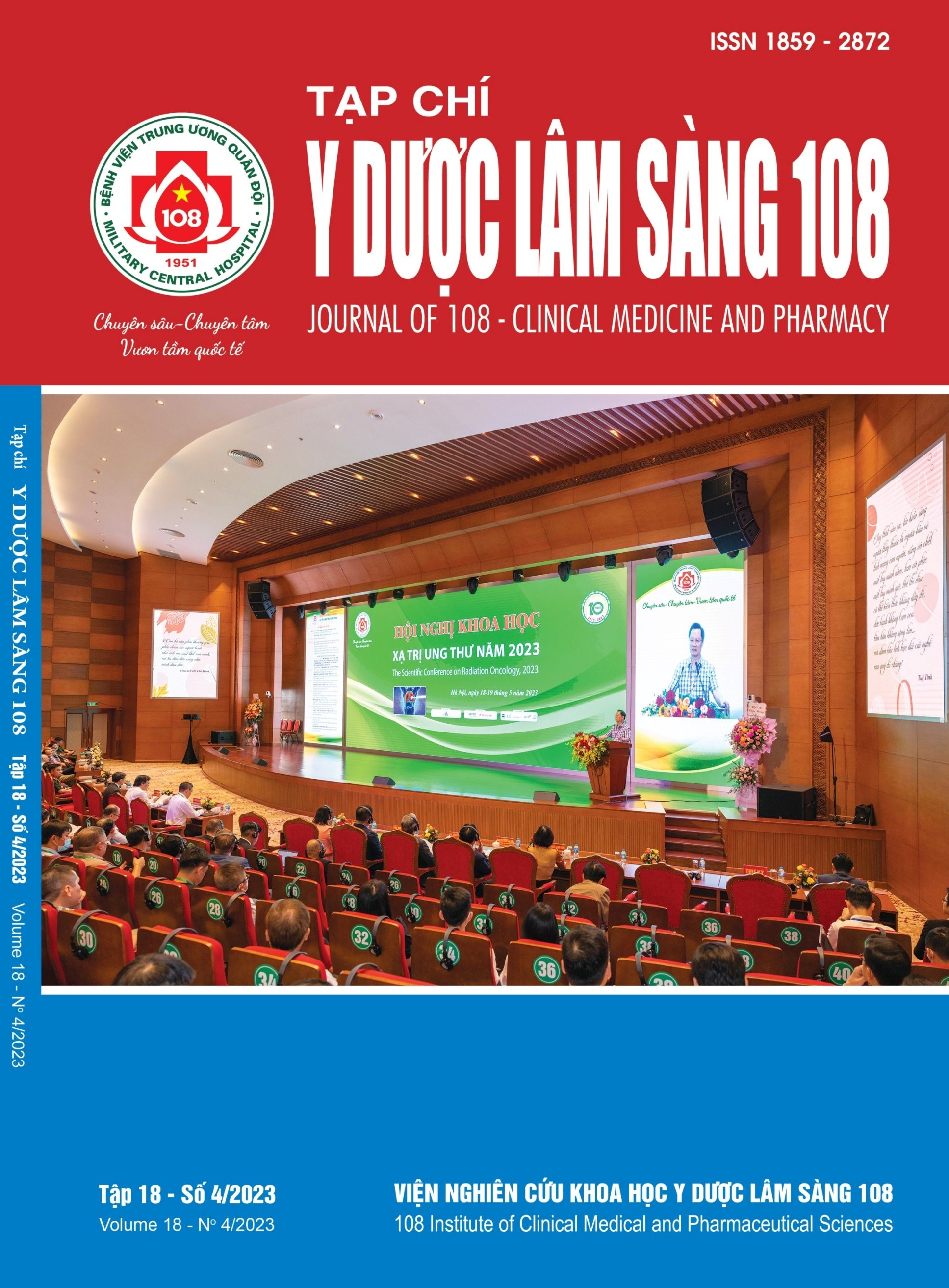Relationship between pre-treatment serum HBV-RNA levels with post-treatment virological response in patiens with chronic hepatitis B
Main Article Content
Keywords
Abstract
Objective: To determine the relationship of serum HBV-RNA levels at baseline for virological response after 6 months of tenofovir disoproxil fumarate (TDF) treatment. Subject and method: 77 treatment-naïve chronic hepatitis B patients were collected peripheral blood at baseline, after 3 and 6 months of treatment. Realtime reverse transcriptase polymerase chain reaction method was used to quantify serum HBV-RNA and HBV-DNA levels, and Medcalc 20.019 version software was used to analyze the collected data. Result: In HBeAg positive patients (n = 34), the predictive value of baseline serum HBV-RNA levels for virological response status after 6 months of treatment was quite good (AUC = 0.77; 95% CI: 0.59-0.89, p<0.05); the cut-off value was 6.17 log copies/ml; sensitivity was 94.12% and specificity was 70.59%. Patients who were HBeAg positive and baseline HBV-RNA levels lower than 6.17 log copies/ml were 9.90 times more likely to achieve virological response at 6 months than the rest. Conclusion: Baseline serum HBV-RNA levels were a predictor of virological response status after 6 months of TDF treatment in HBeAg-positive patients who were treated with tenofovir disoproxil fumarate.
Article Details
References
2. Mauro Viganò, Massimo Puoti, and Pietro Lampertico (2016) Nucleos (t) ide Analogue Based Therapy and Management of Patients. Hepatitis B Virus in Human Diseases: 339-359.
3. Jeng WJ, Sheen IS, Chen YC, Hsu CW, Chien RN, Chu CM, Liaw YF (2013) Off‐therapy durability of response to entecavir therapy in hepatitis B e antigen‐negative chronic hepatitis B patients. Hepatology 58(6): 1888-1896.
4. Yun-Fan Liaw and Fabien Zoulim (2016) Hepatitis B virus in human diseases. Part of the book series: Molecular and Translational Medicine (MOLEMED), Springer 468.
5. Adraneda C, Tan YC, Yeo EJ, Kew GS, Khakpoor A, Lim SG (2022) A critique and systematic review of the clinical utility of hepatitis B core-related antigen. J Hepatol 78(4): 731-741. doi: 10.1016/j. jhep.2022.12.017.
6. Wang J, Shen T, Huang X, Kumar GR, Chen X, Zeng Z, Zhang R, Chen R, Li T, Zhang T, Yuan Q, Li PC, Huang Q, Colonno R, Jia J, Hou J, McCrae MA, Gao Z, Ren H, Xia N, Zhuang H, Lu F (2016) Serum hepatitis B virus RNA is encapsidated pregenome RNA that may be associated with persistence of viral infection and rebound. Journal of hepatology 65(4): 700-710.
7. Ji X, Xia M, Zhou B, Liu S, Liao G, Cai S, Zhang X, Peng J (2020) Serum hepatitis B virus RNA levels predict HBeAg seroconversion and virological response in chronic hepatitis B patients with high viral load treated with nucleos (t) ide analog. Infection and Drug Resistance: 1881-1888.
8. GBD 2019 Hepatitis B Collaborators (2022) Global, regional, and national burden of hepatitis B, 1990-2019: A systematic analysis for the Global Burden of Disease Study 2019. The Lancet Gastroenterology & Hepatology 7(9): 796-829.
9. Wu IC, Liu WC, Chiu YC, Chiu HC, Cheng PN, Chang TT (2021) Clinical implications of serum hepatitis B virus pregenomic RNA kinetics in chronic hepatitis B patients receiving antiviral treatment and those achieving HBsAg loss. Microorganisms 9(6): 1146.
10. Qian J, Zhang C, Liu H, Wang G, Zhao H (2022) Serum HBV RNA as a predictor of virological response in treatment-naive chronic HBeAg-positive HBV-infected patients with normal alanine aminotransferase. Chinese Medical Journal 135(19): 2351-2353.
 ISSN: 1859 - 2872
ISSN: 1859 - 2872
